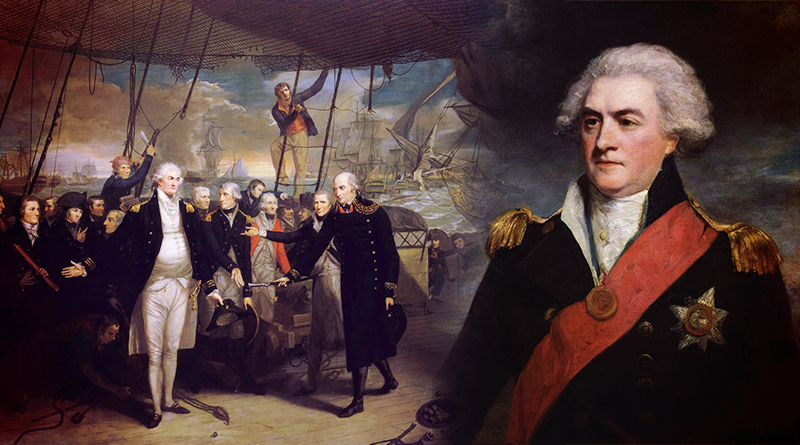Few Dundonians are as well remembered for their contributions to battle than Admiral Adam Duncan, yet many of us may not even know who he is, despite there being a statue dedicated to him in the centre of town. The lands now known to us as Camperdown Park were gifted to him because of his decisive naval victory over a Dutch Navy fleet, whom outnumbered them in battle. That battle was called the Battle of Camperdown, and was fought on 11th October 1797 in waters just outside Haarlem (unsurprisingly called Camperduin)
The son of Lord Provost Alexander Duncan, Adam Duncan was a well-educated and handsome man who married into good connections. Women were said to follow him everywhere and swoon at just how attractive he was – and tall, at 6’4. Born in the Seagate in July 1731, his naval experience began at 15. He became a lieutenant less than 10 years later, and ranked as commander after a further 4 years, by 1759. He continued to climb the ranks, making Admiral and commander-in-chief in the North Sea in 1795.
Despite his stellar career already guaranteeing him a place in the history books, it wasn’t until 2 years after his Admiralty that the Battle of Camperdown was fought. In addition to the lands at Camperdown, he received a very generous pension as well as Camperdown house, a beautiful building that is still standing within the grounds. 1797 really was Adam Duncan’s year, as he was created Viscount Duncan of Camperdown, Baron Duncan of Lundie and also was the guest of honour at a Thanksgiving service at St Paul’s Cathedral. It was attended by King George III and many lords and noblemen, who were all genuinely grateful and thankful to him for his services to his King and country.
He retired in 1800, aged 68, having been appointed Admiral of the white the previous year (which was the 2nd highest senior ranking in the Navy). Unfortunately, he didn’t get to see too much of his retirement, as ill-health in 1804 saw him rapidly decline, killing him before the year was out. His eldest son was granted earldom (it’s believed his wife was fairly miffed that he didn’t receive it immediately after the Battle of Camperdown).
There is a marble statue in St Paul’s Cathedral of Admiral Duncan, as well as a bronze statue in the centre of town. Not bad for a Dundee lad, we’re sure you’ll agree. Admiral Nelson personally penned a letter to Admiral Duncan’s son Henry (a naval officer by this time) in October 1804, in which he wrote, “There is no man who more sincerely laments the heavy loss you have sustained than myself; but the name of Duncan will never be forgot by Britain, and in particular by its navy, in which service the remembrance of your worthy father will, I am sure, grow up in you. I am sorry not to have a good sloop to give you, but still an opening offers which I think will insure your confirmation as a commander”
To read more on the Battle of Camperdown (which, in case you didn’t read earlier, didn’t happen in Dundee), click here. https://en.wikipedia.org/wiki/Battle_of_Camperdown
– DD Tours operates walking tours in Dundee city, covering dark local history such as wars, battles, murders, diseases, riots, disasters and executions. Walk with us for an unforgettable storytelling experience.
OR

